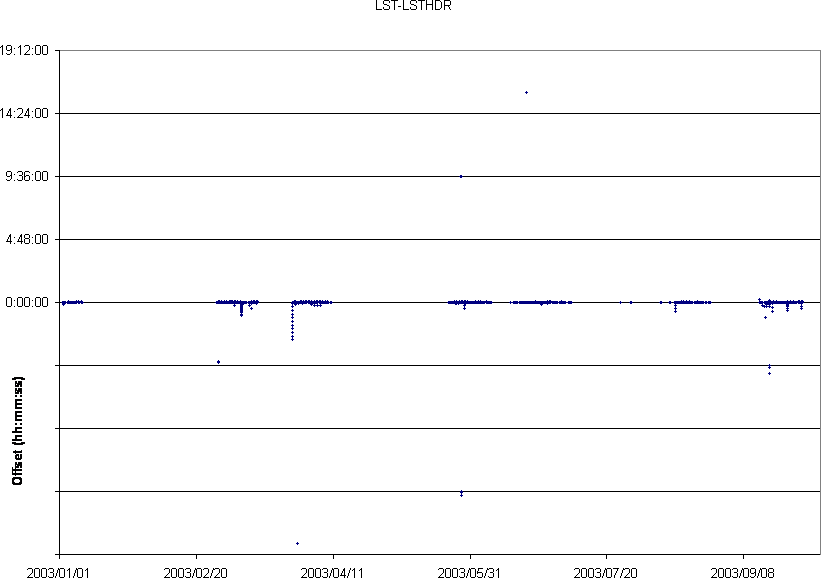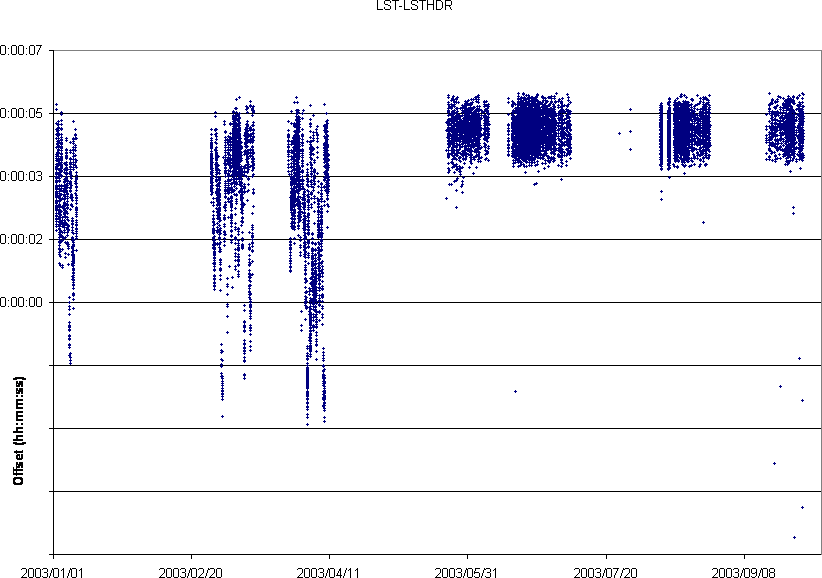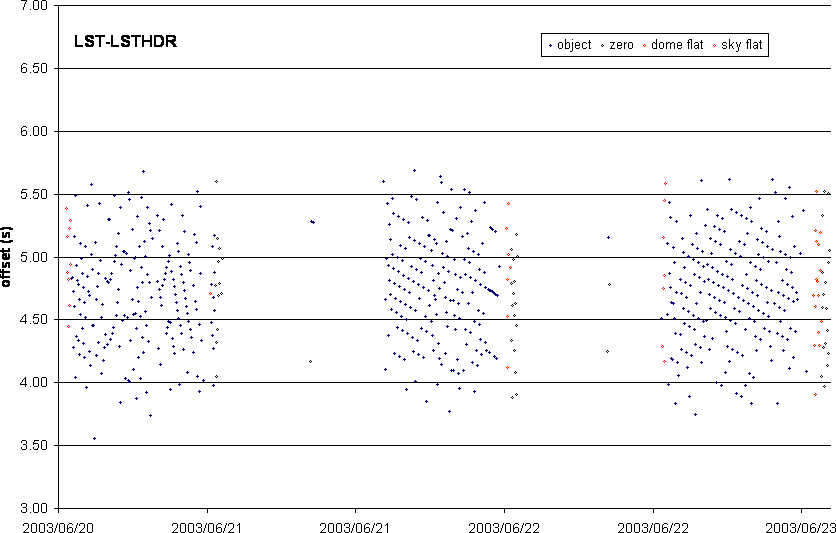Limitations in absolute timing
2003 10 02: Limitations in absolute timing of Mosaic exposures
The original problem(s), described here, have been partially resolved. The residual errors in FITS keyword timing are not likely to present problems for the vast majority of observers, but some should still be aware of the following.
Background
There are a number of FITS header keywords relevant to Mosaic exposure timing. Among them are:
- DATE-OBS - this is the UT time and date of the beginning of the exposure as derived from the Arcon detector controller. Arcon timing is now derived from NTP and should be quite precise.
- LSTHDR - this is the local sidereal time as acquired from the telescope control system at a time near to the beginning of the exposure. The telescope's LST is derived from a GPS system sited in the 1.5-m dome and is believed to be well-behaved.
The majority of other Mosaic header time values are derived from DATE-OBS by calculation.
Observed behaviour
In the absence of a known, precise time source with which to directly compare DATE-OBS and LSTHDR, we can only reliably report on the differences between the two. Previously, significant drifts and glitches between the two have been observed and have compromised some data. Since the Mosaic run of May 2003, the Arcons have been synchronising their clocks via NTP and time values are considerably better behaved.
Besides a fixed offset of a few seconds, local sidereal time as calculated from the DATE-OBS keyword matches that reported in the LSTHDR to within an envelope ~1.5 sec. wide. The variation of differences between the two clocks shows structure which suggests truncation error, or something like it, may be the cause.
LSTHDR is subject to occasional dropouts, possibly related to communications problems with the TCS, in which it is not available in the Mosaic FITS header.
Absolute timing values are not reliable in dark and focus frames.
More details
The graph below shows the difference between LST as calculated from the DATE-OBS keyword and that reported in the LSTHDR keyword for 2003 up to September. The large deviations are all associated with dropouts in LSTHDR, sequences of darks and focus frames.
The graph below is the same as above, but expanded on the y axis. Note the significant improvement in bahaviour of the two clocks starting in May 2003. After this date, points more distant than ~1sec from a difference between the two clocks of ~4sec are associated with focus frames.
The plot below shows data from 3 nights in June 2003 on an expanded scale to show the behaviour in the course of a night. There is clearly some quantizing effect, but no longer any large-amplitude steady drifts.
Updated on June 5, 2021, 9:54 pm


